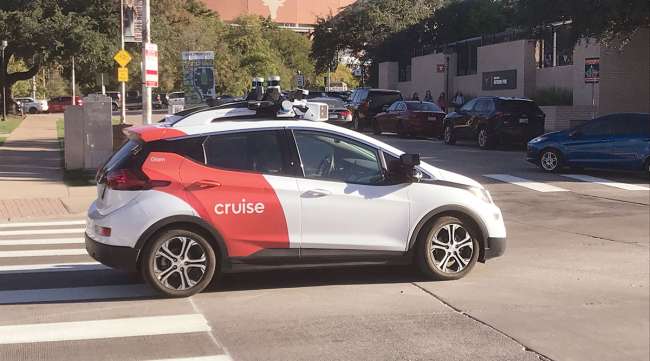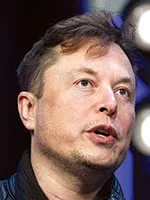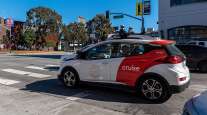GM to Wind Down Robotaxi Operations Championed by CEO Barra

[Stay on top of transportation news: Get TTNews in your inbox.]
General Motors Co.’s Cruise self-driving car unit will exit the robotaxi business, a retreat from a market that proved costly and full of reputational pitfalls for the automaker.
Cruise and GM’s technical teams will be combined into a single effort focused on developing autonomous and advanced driver safety technology for future models sold by GM, according to a Dec. 10 statement. GM said it will no longer fund robotaxi development work “given the considerable time and resources that would be needed to scale the business, along with an increasingly competitive robotaxi market.”
It’s a big retrench, after Cruise survived an earlier shakeout among autonomous driving companies. The business was resuming operations and moving past an incident last year in which one of its cars dragged and injured a pedestrian.

Barra
The move has significant implications for GM and CEO Mary Barra, who has sought to transform the automaker into a transportation technology company. She had laid out plans to double GM’s revenue by 2030 in part by generating $50 billion from Cruise — a goal that looks remote without a robotaxi business to bring in fares.
RELATED: Trump-Musk Alliance May Boost Tesla, Reshape Big Tech

Musk
GM is pulling back just as Alphabet Inc.’s Waymo expands into more cities and Tesla Inc. plans to start its robotaxi business in 2026. Tesla CEO Elon Musk is now one of the most influential voices in President-elect Donald Trump’s circles and has pressed for a federal framework for self-driving cars.
Dropping robotaxi development will save GM more than $1 billion in annual costs, the company said. GM is buying back equity in Cruise from investors and, through agreement with its other shareholders, will boost its stake from 90% to more than 97%.
GM’s shares rose 2.7% as of 4:26 p.m. after regular trading in New York.
Tumultuous Stretch
The retreat caps a tumultuous stretch for Cruise. The pedestrian accident led to a sharp crackdown by regulators, with California pulling Cruise’s license to ferry passengers and charge fares. The company temporarily grounded its fleet nationwide.
Not long after the incident, Cruise founder Kyle Vogt resigned, and the company later fired nine top executives and laid off 25% of the workforce.
RELATED: Autonomous Trucks Reshaping the Freight Industry
Funding was becoming an issue for Cruise. GM said in June it was giving the company $850 million in cash, which was enough to keep it going into the first quarter. Cruise had resumed running cars with safety drivers in Dallas and Houston and planned to test vehicles in California.
GM had conversations with potential investors but even with some interest, decided that the future cost of developing a robotaxi business was more than management wanted to spend.
Ending the robotaxi push brings GM closer to its core business of making and selling cars, scrapping dreams of offering mobility as a service.
Want more news? Listen to today's daily briefing below or go here for more info:




